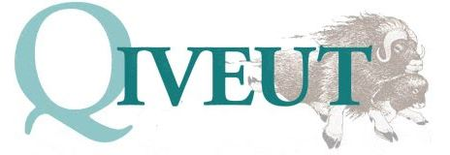What is Qiviut?
What is Qiviut?
Qiviut is a rare, incredibly soft and light-weight fiber. The word qiviut describes the soft under wool of the Musk Ox or Oomingmak. There are several spellings for this word: kiviuk, qiviuk, qiviut, qiveut, to name a few. The spelling I use, QIVEUT, has been the name of my company and that of my long-time friend and business partner Colleen White, who used Qiveut as her business name for over 20 years. Colleen started her first qiviut business in Fairbanks, Alaska.
Why is it so warm?
The Musk Ox coat is multi-layered to keep them warm in the freezing arctic weather. The outer fur is coarse and stiff, the under wool is exceptionally soft. The layered coat of the Musk Ox is similar to that of cashmere goats, Musk Ox wool or qiviut is rare, finer, softer and warmer than cashmere. Qiviut is 8 times warmer than lamb’s wool and 6 times warmer than alpaca. For further technical information contact the University of Alaska Fairbanks, Large Animal Research Station or L.A.R.S.
Why is Qiviut so costly?
Musk Oxen were nearly extinct in Alaska in the late 1800's. The musk oxen were then slowly reintroduced to the state of Alaska and now some are raised on farms where their qiviut is collected seasonally. Each adult animal sheds only five to eight pounds a year. Gathering enough fiber to be cleaned can take several years, making qiviut yarn quite rare. Collecting and processing qiviut into a usable yarn is exceptionally time-consuming being mostly done by hand. Processing, which is the cleaning and de-hairing of qiviut fiber is more expensive by far than processing sheep’s wool or alpaca into yarn.
Where the Musk Ox are raised on farms, in Alaska, they are hand combed, not sheared. The qiviut begins to shed from their coat naturally when the temperature changes in the spring. Hand combing is just what it sounds like. It takes a long time to comb an adult Musk Ox.
20 years ago the only place in the United States that had a plant capable of de-hairing qiviut, that is separating the heavier guard hairs from the fine under wool, required a minimum of 500 lbs. of fiber. That commercial plant closed several years ago leaving us with an uncertain future. Fortunately a new small business has filled in the gap that was left by the large commercial fiber mill. We have begun to use a small family owned mini-mill, here in the USA, to de-hair the fiber that we collect. Thank you family farming and small businesses!
Read more about muskox and raw qiviut fiber collecting and processing here.
Qiviut Products
There are few people who knit with qiviut, fewer still who weave with qiviut and a rare few who dye the fiber. Designing with qiviut is complicated and requires careful planning. Dying qiviut can be quite a challenge. The natural color lends itself to create beautiful earth tones. Dying does not damage qiviut fiber any more than it damages cotton, silk or your favorite wool.
Qiviut items are designed, dyed, woven or knit and certified Made in Alaska, permit # 4599.




